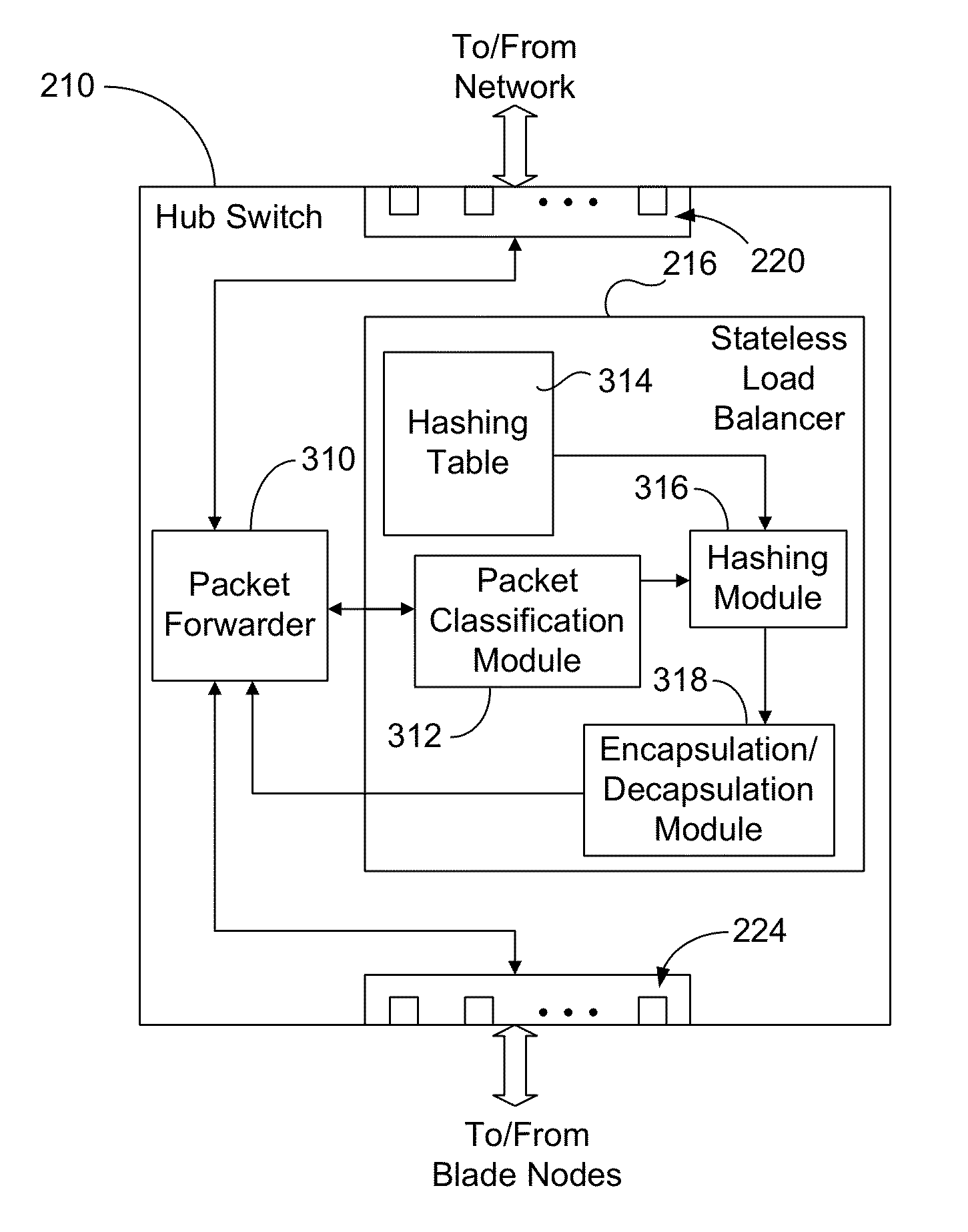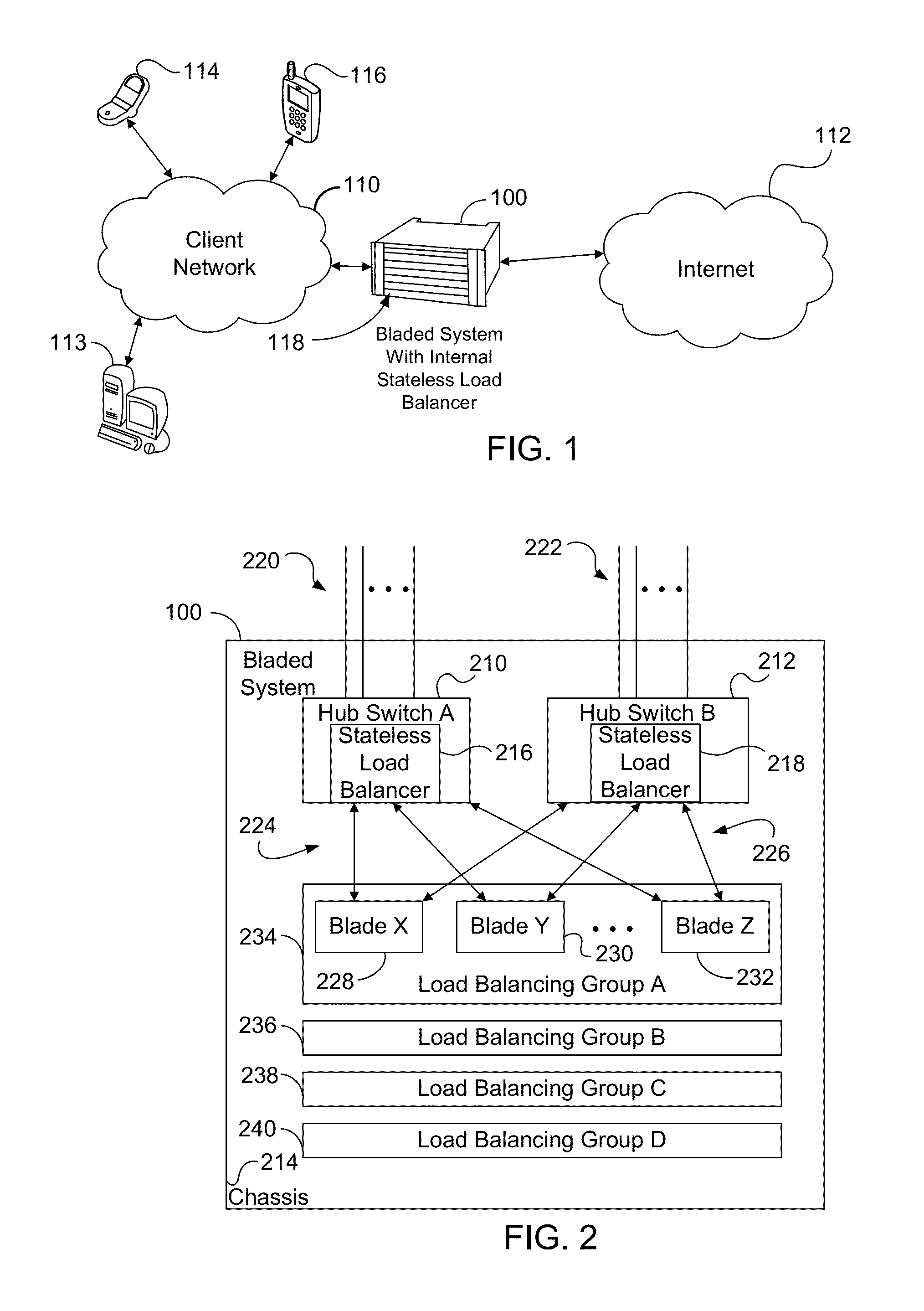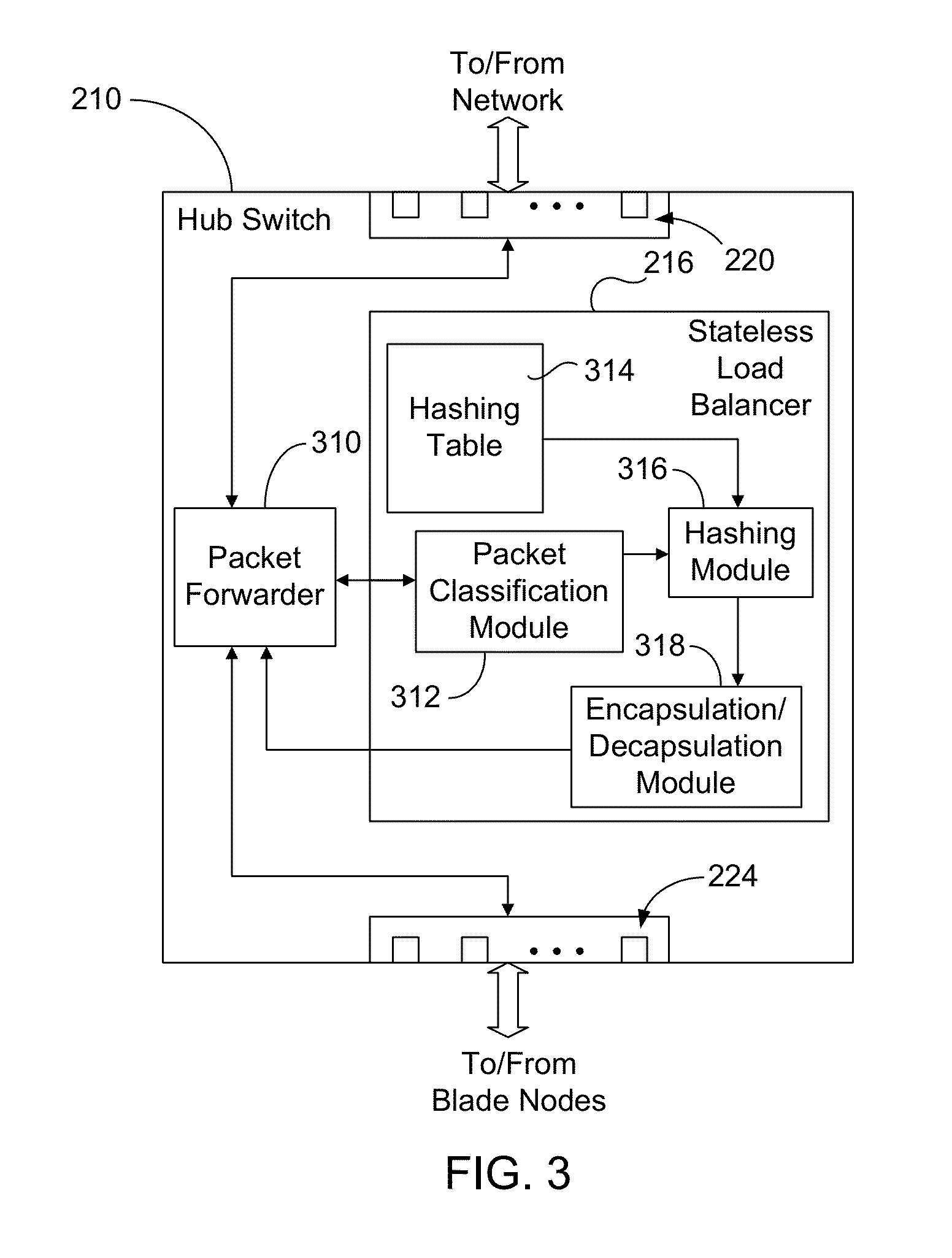Stateless load balancer in a multi-node system for transparent processing with packet preservation
a load balancer and multi-node technology, applied in the field of distributed computing environment balancing workload distribution, can solve the problem that certain load balancers are provided as expensive front end devices
- Summary
- Abstract
- Description
- Claims
- Application Information
AI Technical Summary
Benefits of technology
Problems solved by technology
Method used
Image
Examples
Embodiment Construction
[0020]In certain embodiments disclosed herein, stateless load balancing is used to distribute network packets received by a distributed system across a set of processing resources within the system. As used herein, “stateless” is a broad term having its normal and customary meaning in the art and includes load balancing that considers each packet individually and independently, in a memoryless manner without considering previous decisions, yet is able to make consistent load balancing decisions to determine the processing resource for like packets. The load balancing is performed by the system's switching device, which reduces cost and complexity. In certain embodiments, the distributed system comprises a bladed system having, for example, an Ethernet backplane. The disclosed load distribution uses packet encapsulation to fully preserve the original packets for deep packet inspection or other bump-in-the-wire applications. Each original packet is encapsulated in another packet with ...
PUM
 Login to View More
Login to View More Abstract
Description
Claims
Application Information
 Login to View More
Login to View More - R&D
- Intellectual Property
- Life Sciences
- Materials
- Tech Scout
- Unparalleled Data Quality
- Higher Quality Content
- 60% Fewer Hallucinations
Browse by: Latest US Patents, China's latest patents, Technical Efficacy Thesaurus, Application Domain, Technology Topic, Popular Technical Reports.
© 2025 PatSnap. All rights reserved.Legal|Privacy policy|Modern Slavery Act Transparency Statement|Sitemap|About US| Contact US: help@patsnap.com



